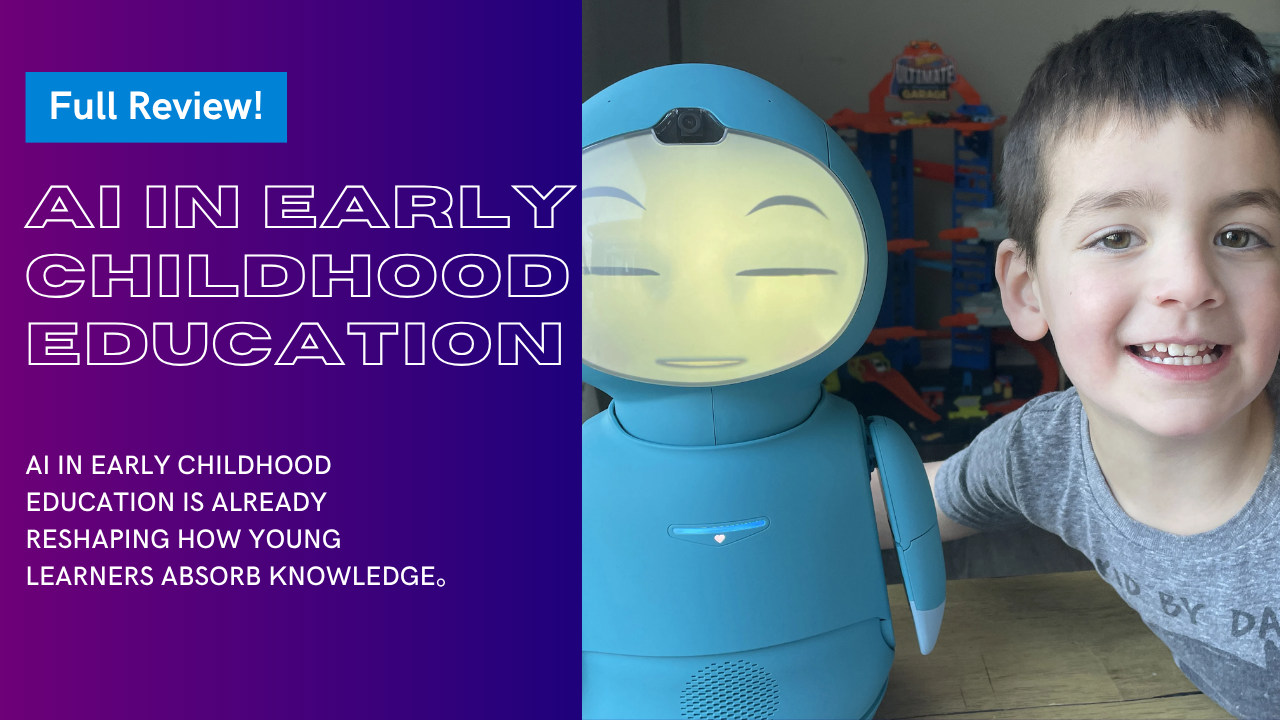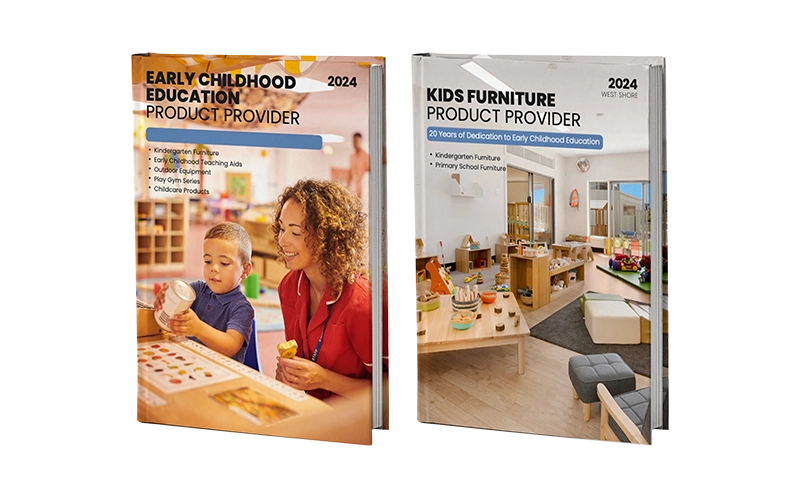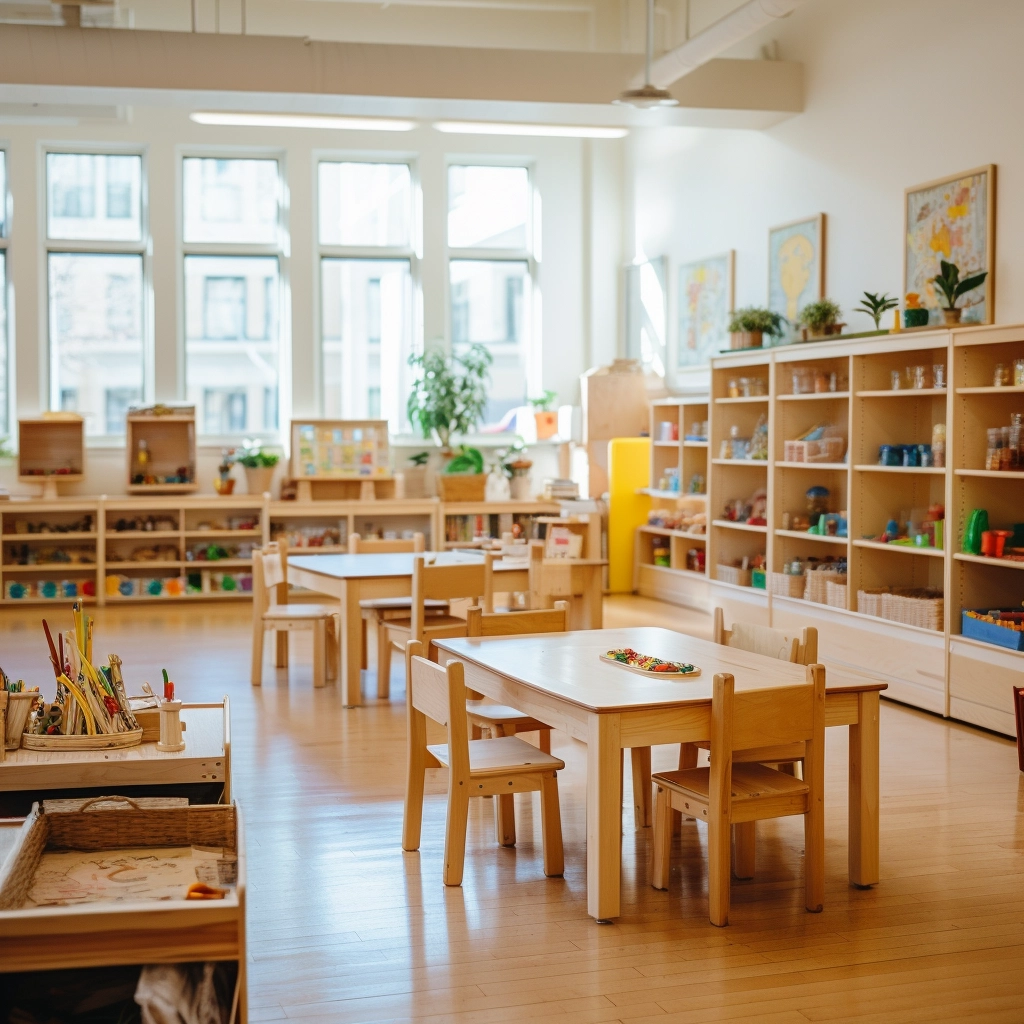Are children learning better with AI?
These questions are no longer speculative. AI in early childhood education is already transforming how young learners absorb information, engage with content, and build foundational skills. The conversation has moved beyond whether this shift will happen—it’s now about how fast.
While the concept may sound futuristic, it’s unfolding rapidly. As Samia Kazi, Middle East Regional Advisor for Childhood Education International, notes, the integration of artificial intelligence into early learning environments is not a distant possibility but an urgent reality. In her article “AI in Early Childhood – Five Things Teachers Need to Know”, initially published in The Blue DOT by the Mahatma Gandhi Institute of Education for Peace and Sustainable Development, Kazi calls on educators to take proactive steps in preparing for this technological shift.
Her insights highlight five essential considerations every educator should understand as AI reshapes the early learning landscape. Let’s explore what this means for teachers, parents, and—most importantly—our youngest learners.

Why Talk About AI in Early Childhood Education Now?
우리는 어린아이들조차 대부분의 어른들보다 아이패드를 더 빨리 다룰 수 있는 시대에 살고 있습니다. 디지털 네이티브들은 기술에 둘러싸여 자라고 있습니다. 하지만 유아 교육에서 AI는 화려한 기기에 관한 것이 아닙니다. 머신러닝과 자동화가 어떻게 아이들의 진정한 인지 및 사회성 발달을 지원할 수 있는지에 관한 것입니다.
교육자, 학교 설립자, 심지어 캐나다의 마크(저희의 가장 충성스러운 B2B 고객 중 한 명)와 같은 조달 담당자조차도 유아 교육의 본질을 잃지 않으면서 어떻게 AI를 통합할 수 있을지 고민하기 시작했습니다.
AI in early childhood education is not about replacing teachers—it’s about enhancing their ability to reach children where they are, at their level, and with what they need most.

유아교육에서 AI란 무엇인가?
AI in early childhood education (AI ECE) refers to the use of artificial intelligence technologies to enhance teaching, personalize learning, and improve classroom efficiency in early years settings. While AI cannot replace the emotional connection between teacher and child, it can serve as a powerful tool to support educators and enrich the experiences of young learners.
The market for artificial intelligence in ECE is expanding rapidly. A report from Global Market Insights Inc. estimates that the global AI education market will grow from $4 billion in 2022 to $30 billion by 2032. This surge signals a shift in how early learning environments are evolving. As Samia Kazi, Regional Director for Childhood Education International, emphasizes, “We must get engaged and proactive on these topics immediately as educational artificial intelligence is just starting to take its first steps.”
So, how can AI help in early childhood education? Here are several current applications:
- Personalized Learning: AI-powered platforms assess each child’s performance and adjust activities accordingly. This allows children to learn at their own pace, supporting both advanced and struggling learners.
- Interactive Learning Experiences: From gamified apps to AI-driven storytelling and pronunciation tools, AI makes learning more engaging and responsive to each child’s interests.
- Accessibility & Inclusion: Tools powered by AI ECD technology can help children with special needs or language barriers fully participate in classroom activities.
- Early Detection of Learning Challenges: Childhood AI systems can identify signs of developmental delays or learning disabilities, providing teachers and parents with early alerts.
- Classroom Management Support: AI automates administrative tasks like attendance, documentation, and communication with families, giving educators more time to focus on teaching.
In short, AI in early childhood education is reshaping how we approach the early years, not by replacing human connection, but by enhancing it through intelligent, data-informed support.
유치원에서 이미 사용되는 AI 기반 도구
You might be surprised to learn that AI in early childhood education is not a futuristic idea—it’s already part of many preschool classrooms today. Below are some real-world tools and systems that are being integrated into early learning environments, blending traditional pedagogy with modern technology:
- KIBO Robots (developed by KinderLab Robotics): These screen-free coding robots are widely used in early STEM programs. Children program them by arranging wooden blocks with barcodes, which KIBO scans to perform sequences. This tactile experience aligns well with Montessori and Reggio Emilia practices by encouraging open-ended, self-directed exploration, while still introducing foundational logic and problem-solving.
- Osmo Learning System: Used in thousands of kindergartens and early learning centers, Osmo combines physical play (like puzzles, drawing, or number tiles) with AI-powered vision technology. The system’s camera “sees” what children are doing on the table and gives real-time feedback, creating a hybrid play-learning experience that is both engaging and highly personalized. This is a leading example of early learning software that uses AI to guide instruction adaptively.
- StoryBots Classroom (by Netflix and Amplify): While not fully AI in itself, StoryBots has begun integrating machine learning features to customize content recommendations based on what children respond to. Some programs now allow teachers to enter a child’s name or learning goal, resulting in personalized songs and animations that boost vocabulary and concept recall, especially helpful in language acquisition and ESL settings.
- 클래스도조: Though widely known for classroom communication and behavior tracking, recent updates to ClassDojo integrate AI-based sentiment analysis. This allows the system to help educators interpret classroom mood trends based on student responses and behavior patterns. It’s used by thousands of preschools globally, including bilingual institutions and Montessori classrooms, as a bridge between educators and families.
- AI-Enabled Interactive Whiteboards: Brands like Promethean and ViewSonic have introduced early education boards with embedded AI. These can recognize gestures, adjust learning content based on attention span and pacing, and allow for multimodal interaction. In some pilot classrooms in Singapore and Finland, these boards are being used in early education robot-assisted lessons, supporting both group collaboration and individual engagement.
Even Montessori-inspired environments, which traditionally favor tactile and nature-based materials, are starting to integrate these intelligent tools in a way that complements—not replaces—their core values. For instance, a Montessori school in San Diego recently introduced Osmo into their literacy corner, using it to support phonics practice while keeping materials self-correcting and hands-on. Similarly, some Reggio Emilia-inspired centers in Australia are piloting voice-based AI assistants that respond to children’s questions during project work, extending the child’s inquiry rather than directing it.
These examples demonstrate that artificial intelligence in ECE is not about turning preschools into digital spaces, but rather about using intelligent systems to enhance observation, support differentiation, and enable more flexible learning pathways, while keeping the educator’s role central.
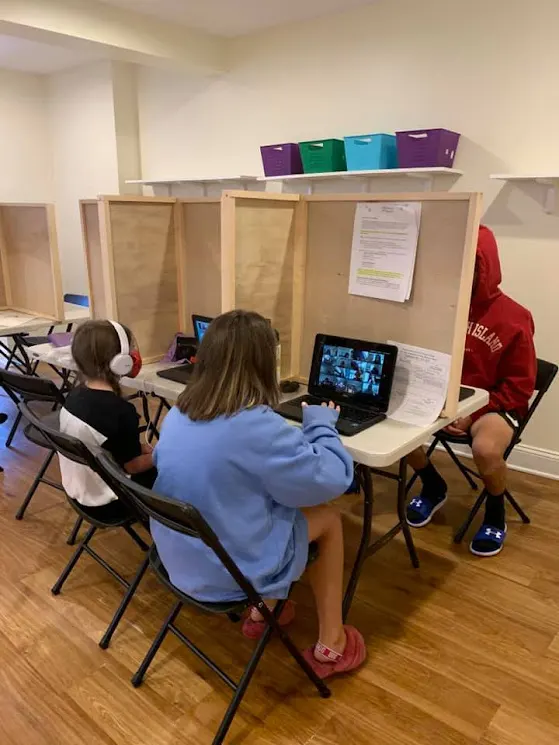
개인 맞춤형 학습: 게임 체인저
유아교육 분야에서 AI가 약속하는 가장 큰 장점 중 하나는 진정한 개인화입니다.
과거에는 교사들이 하나의 수업 계획으로 20~30명의 아이들의 요구를 충족해야 했습니다. 이제 AI는 다음과 같은 사항을 파악하는 데 도움을 줍니다.
- 어떤 아이가 개념에 어려움을 겪고 있나요?
- 어느 아이에게 더 진보된 자료가 필요한가요?
- 다양한 학습자들은 어떻게 지식을 유지합니까?
이는 아이들이 억압받거나 너무 강하게 밀어붙이지 않는다는 것을 의미합니다. 아이들의 수준에 맞춰 학습이 이루어집니다. 이는 뇌 발달이 정점에 달하는 0~6세라는 중요한 시기에 매우 효과적입니다.
SmartyPal과 같은 시스템은 아이가 스토리북에 어떻게 참여하는지 읽고 이에 따라 앞으로 읽을 책을 조정합니다. 이는 AI가 수동적인 화면 시간 대신 깊은 참여를 촉진하는 완벽한 예입니다.
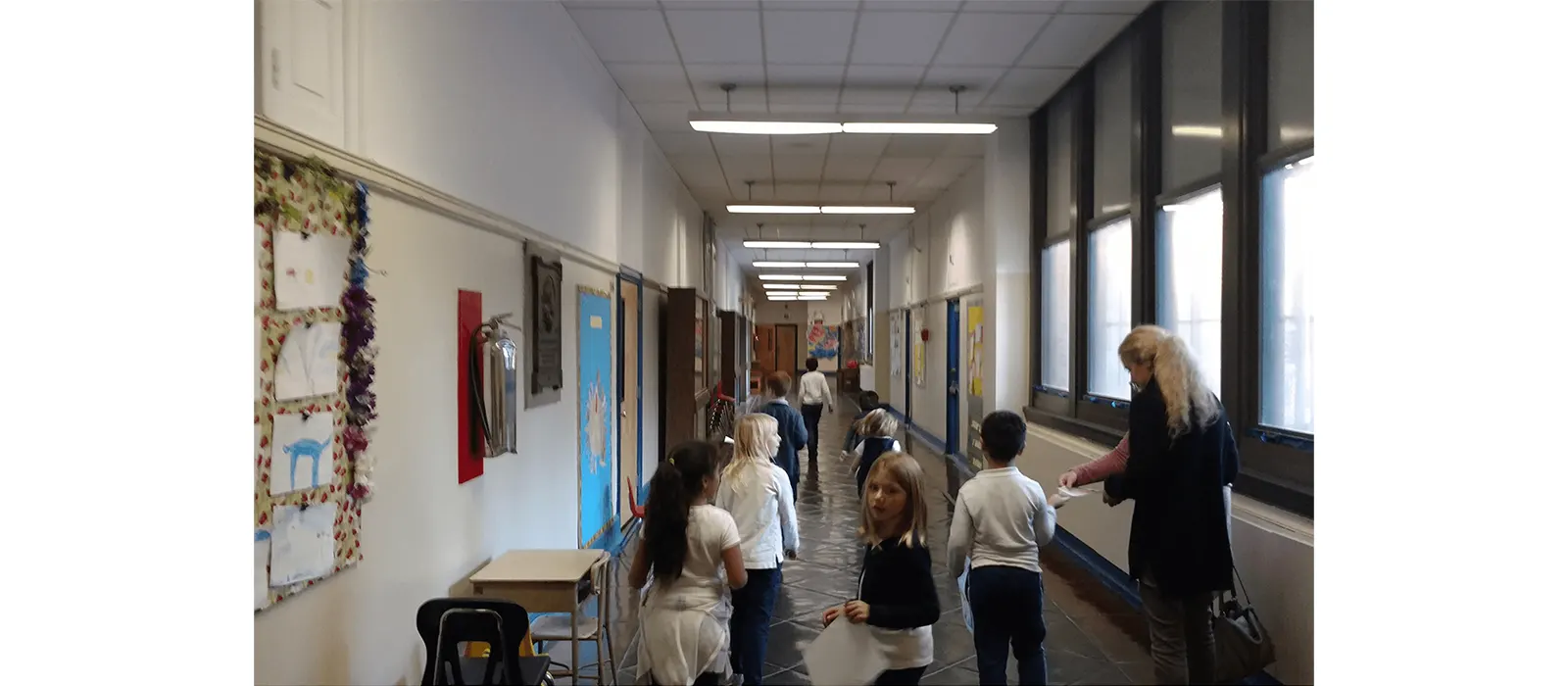
Be mindful of children’s screen time
부모와 교육자들은 화면 시간이 너무 길어지거나 인간관계가 끊어지는 것을 걱정합니다. 그리고 그럴 수밖에 없습니다.
하지만 핵심은 이겁니다. 유아교육에서 AI는 실제 상호작용을 대체하는 것이 아니라 보완하는 역할을 하는 것이 가장 효과적입니다.
고객이 유치원 교실을 설계하는 데 도움을 줄 때, 우리는 항상 디지털 도구와 함께 실습 놀이와 사회적 학습을 통합할 것을 권장합니다.
우리는 기술이 감각, 협력, 그리고 움직임 기반 학습을 지원하는 하이브리드 교실을 믿습니다. AI가 반드시 고립을 의미할 필요는 없습니다. 현명하게 활용하면 감정을 파악하고 그룹 놀이 활동을 제안함으로써 소통과 공감을 증진할 수 있습니다.
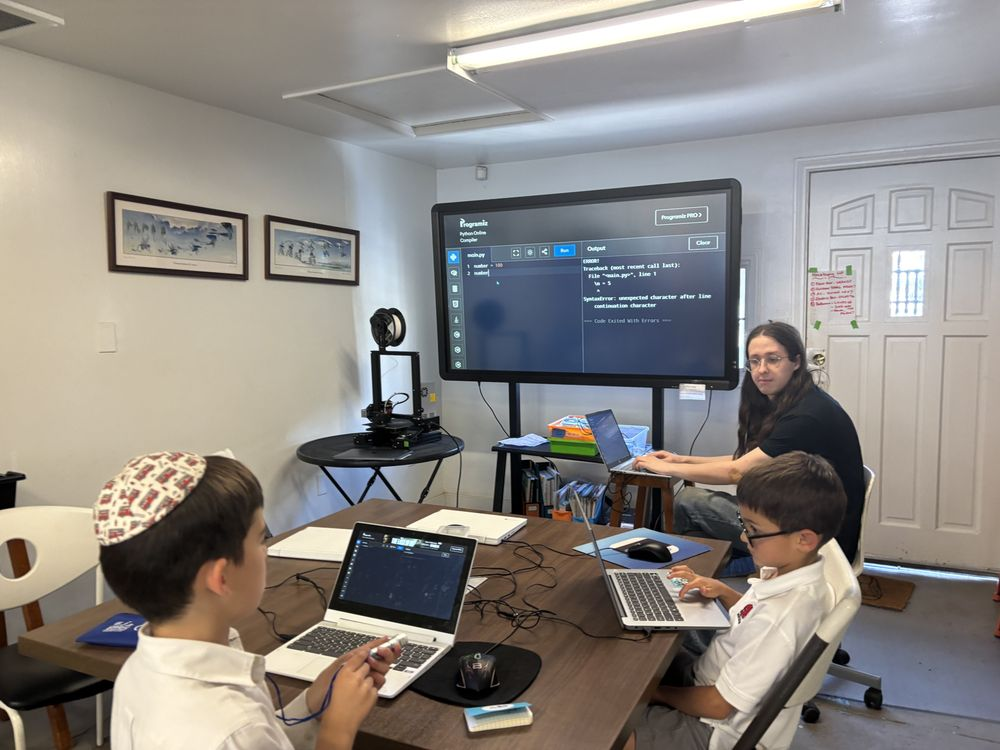
Teachers and AI combine to teach
AI will never replace great teachers. But it can make them even better.
교사가 하루를 다음과 같은 대시보드로 시작한다고 상상해 보세요.
- 어떤 아이들이 힘든 밤을 보냈을까요?(스마트 수면 추적기를 통해)
- 오늘의 독서 과제에 어려움을 겪을 가능성이 있는 사람은 누구입니까?
- 어떤 아이들이 정서적으로 성장하고 있나요?
교사는 이러한 데이터를 활용해 더 현명한 결정을 내리고, 더 나은 활동을 계획하고, 학생들과 더 깊은 소통을 할 수 있습니다.
유아교육 분야에서 AI는 교사가 가장 잘하는 일, 즉 아이들과 소통하는 데 도움이 됩니다.
과제와 윤리적 고려 사항
물론, 햇빛과 화면 시간만 있는 것은 아닙니다. 유아 교육 분야에 깊이 투자한 CEO로서 저는 고객과 파트너사에게 AI의 책임감 있는 사용을 항상 강조합니다.
주요 우려 사항은 다음과 같습니다.
1. 데이터 개인정보 보호
어린아이들은 취약합니다. COPPA(아동 온라인 개인정보 보호법) 및 GDPR과 같은 플랫폼은 유럽에서 사용하는 경우 엄격한 규정을 준수해야 합니다.
2. 기술에 대한 과도한 의존
AI는 실제 학습과 관계를 대체하는 것이 아니라 지원해야 합니다. 과도한 사용은 자연스러운 놀이, 탐구, 그리고 사회적 유대감을 저해할 수 있습니다.
3. 알고리즘의 편향
신중하게 설계되지 않은 AI 시스템은 문화적 또는 성적 편견을 강화할 수 있습니다. 기업과 교육자는 개발 과정에서 포용적이고 다양한 데이터 세트를 활용해야 합니다.
4. 형평성과 접근성
모든 학교가 기술에 동등하게 접근할 수 있는 것은 아닙니다. 예산 부족, 인프라 부족, 그리고 부족한 직원 교육으로 인해 많은 유치원, 특히 농촌이나 개발도상국의 유치원들이 AI 도구의 혜택을 누리지 못하고 있습니다. 교육 기술 제공업체와 정책 입안자들은 자원이 부족한 환경에서도 확장 및 구현이 가능한 저렴하고 저기술적인 AI 솔루션 개발에 집중해야 합니다. 이러한 디지털 전환에서 어떤 아이도 소외되지 않도록 형평성을 최우선으로 고려해야 합니다.
기술은 그 이면에 숨겨진 의도를 반영한다는 점을 잊지 마세요. 유아 교육에서 AI는 공감, 형평성, 그리고 윤리에 기반해야 합니다.
유아교육 분야에서 AI의 미래는 어떻게 될 것인가
이 모든 것은 어디로 향하는가?
다음 5~10년 안에 다음과 같은 일이 일어날 것으로 믿습니다.
- 모든 교실에 AI 기반 교사 조수 배치
- 다양한 커뮤니티를 위한 다국어 실시간 번역
- 기술뿐만 아니라 기분에 맞춰 적응하는 감정 감지 학습 플랫폼
- AI로 강화된 VR/AR 학습 세계는 실제 경험을 시뮬레이션합니다.
- 발달 데이터를 기반으로 아동 중심 환경을 구축하는 AI 기반 교실 설계 도구
미래지향적인 유아교육 제공자 중 다수는 인체공학적 미취학 아동 가구와 스마트 학습 스테이션을 결합하여 직접 놀이와 디지털 학습을 지원하는 교실을 만드는 방안을 모색하고 있습니다.
가장 좋은 점은 무엇일까요? 이러한 기술은 전 세계적으로 점점 더 저렴해지고 접근성이 높아지고 있다는 것입니다. 예산이 빠듯한 학교조차도 이제 품질 저하나 과도한 지출 없이 AI를 학습 환경에 통합할 수 있습니다.
결론
유아 교육 분야의 AI는 단순한 트렌드가 아니라, 혁신입니다. 현명하게 활용하면 교사의 역량을 강화하고, 아이들의 참여를 유도하며, 다음 세대가 더 밝은 미래를 준비할 수 있도록 도와줍니다.
이러한 변화가 지속됨에 따라, 기존 학습과 새로운 기술을 모두 지원할 수 있는 적절한 환경을 갖추는 것이 점점 더 중요해지고 있습니다. 바로 이 부분에서 경험 많은 파트너가 큰 변화를 만들어낼 수 있습니다.

